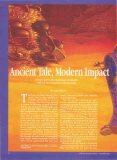
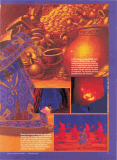
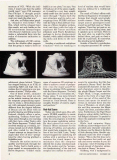
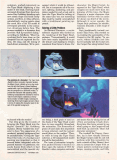
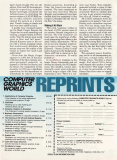
The hero of Walt Disney Pictures' newest film Aladdin is initially presented to us as a ragtag, insecure boy forced to resort to thievery to feed himself. But by the end of the full-length, animated feature (Disney's 31st), Aladdin's magical adventures have transformed him into a confident young man able to realize his dreams more successfully because he has come to grips with his true self. His story is an adolescent's rite of passage, albeit in the context of a rollicking animation—complete with a monkey-pal named Abu, a Magic Carpet character with a distinctly mischievous personality but a true desire to help his friends in need, and a thoroughly hip Genie whose comedic instincts have been repressed for one too many centuries within the confines of a magic lamp.
The theme of "coming of age" seems somehow appropriate when measured against the growth of Walt Disney"s Computer Generated Imagery (CGI) department in Glendale, California—a small group of a dozen or so animators operating within the larger sphere of Disney's Feature Animation department. The computer graphics lab from which CGI was formed first flexed its muscle with the relatively simple clock mechanism in The Great Mouse Detective (1986). By the time viewers beheld the elaborate, rendered ballroom in last year's Beauly and the Beast, a full-fledged CGI group had gained a surer sense of itself and the contribution it could make.
[…]